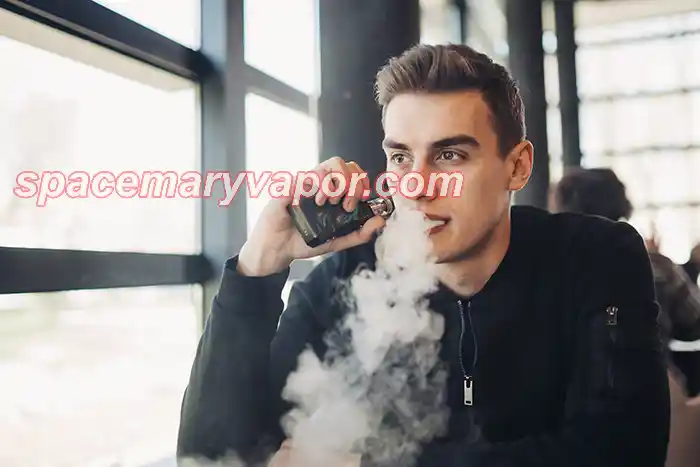The Booming Vape Market in Peru and Chile: Insights, Regulations, and Trends You Should Know
The Booming Vape Market in Peru and Chile: Insights, Regulations, and Trends You Should Know
The vaping industry is taking off across the globe, and Latin America is no exception. Among the countries experiencing rapid growth in the vaping market are Peru and Chile. These two nations are playing a significant role in shaping the future of vaping in the region. As more and more consumers turn to vaping as a healthier alternative to traditional smoking, the industry in both countries is undergoing major changes. This article explores the vaping market in Peru and Chile, delving into regulations, market trends, and what’s driving the growth of flavors vapes.
Peru: A Rapidly Expanding Market with a Focus on Health-Conscious Consumers
In Peru, vaping is gaining traction at an impressive rate. By 2024, the Peruvian vapemarket is projected to generate $122.7 million in revenue, with an annual growth rate of 10.00% from 2024 to 2029. Although still developing compared to global leaders like the United States, Peru's market holds a lot of potential. For reference, the United States is expected to rake in a whopping $8.83 billion in revenue by 2024, but Peru’s revenue per capita is also on the rise, projected to reach $4.26 per person in 2024. This shows that while the market is still in its early stages, it's growing fast and showing signs of significant expansion.
Why is vaping gaining so much traction in Peru? The answer lies in the health-conscious shift among consumers. More people are looking for alternatives to traditional tobacco products, especially as awareness of smoking’s harmful effects on health grows. Many people see vaping as a safer, less harmful option. Flavors vapes, in particular, are seeing a surge in popularity, offering consumers a wider variety of choices that traditional cigarettes simply can’t match.
Policy Changes: Legalizing Flavors Vapes
In a landmark move, Peru recently passed a law that allows the sale and use of flavors vapes. This new law is a significant development for the country’s vaping industry. Before the legislation was passed, flavors e-liquids and vapes faced tight restrictions. However, with the new law in place, consumers now have more freedom to choose from a wide array of vape flavors, from fruity blends to menthol and beyond. Looking for more vapes? space mary sm8000 helps you discover new options!

This move toward legalization reflects a broader global trend where flavors vapes have become an important part of the vaping experience. Flavors products appeal to a wide demographic, especially young adults and those transitioning away from traditional cigarettes. As a result, flavors vapes are becoming a major selling point for both consumers and businesses in the industry.
However, the legalization of flavors vapes doesn’t mean that regulations have been completely relaxed. There are still significant restrictions on where and how vaping products can be sold and used in Peru. For instance, tobacco products and vapes are prohibited in certain public spaces, such as hospitals, educational institutions, public transportation, and workplaces. The goal of these restrictions is to minimize exposure to secondhand vapor and to keep vaping products away from minors.
Age Restrictions and Advertising Bans
In Peru, the minimum legal age for purchasing vaping products is 18, ensuring that minors are not able to access nicotine-based products. This age limit is part of broader efforts to protect young people from the potential harms of vaping. Retailers must ask for identification when selling these products to ensure compliance with the age restrictions.
Additionally, Peru has placed a ban on all tobacco and vaping product advertisements. This means that vaping companies cannot promote their products through television commercials, social media campaigns, or public sponsorships. This advertising ban is aimed at preventing the normalization of vaping, especially among young audiences who are highly influenced by advertisements and influencer culture on social media platforms.
Chile: A More Regulated But Still Growing Vape Market
While Peru is moving quickly into the vaping space, Chile has been a bit more cautious, especially in terms of regulatory oversight. The Chilean vaping market is expected to generate around $83.3 million in revenue by 2024, with a steady annual growth rate of 4.12% between 2024 and 2029. Despite the slower pace of growth, Chile has a well-regulated market that is seeing steady progress.
The demand for vaping products in Chile is rising steadily, especially as more people seek healthier alternatives to traditional cigarettes. Much like in Peru, Chile’s population is becoming more health-conscious, which is driving the adoption of vapes. Flavors vapes, in particular, are proving to be a major draw for consumers who want variety in their smoking alternatives.
The Regulatory Environment in Chile: A Stricter Approach
Chile has a different approach to regulating vapes compared to Peru. For many years, vapes and vaping products were classified as medical devices in Chile, which meant they had to go through a rigorous registration process before they could be legally sold. This was a significant barrier to entry for many vaping companies, as it made the approval process time-consuming and costly.
However, in recent years, Chile has shifted its stance on vaping. The country has moved away from classifying vapes as medical devices, though nicotine-based vapes and e-liquids are still subject to the country’s strict pharmaceutical regulations. This means that, for nicotine-containing products to be legally sold, they must undergo the same regulatory scrutiny as other pharmaceutical products. Without the necessary pharmaceutical licenses, these products cannot be sold in Chile.
Non-nicotine vapes, however, are treated as consumer goods, which means they can be sold without the need for pharmaceutical approval. This distinction is important for both consumers and businesses, as it allows for a broader range of vape products to be legally available for sale in the country.
The Impact of New Legislation on the Market
Chile’s government has made significant changes to its vaping laws in recent years. In October 2024, the Chilean Senate approved Bill 12694-11, which sets new standards for the consumption, advertising, commercialization, and safety of both nicotine and non-nicotine e-cigarettes. This bill has removed vapes from the category of medical devices, opening up new opportunities for the market to grow.
As part of this new law, manufacturers must include clear health warnings on all vaping products, especially those containing nicotine. The warning "Este producto contiene nicotina, sustancia altamente adictiva" (This product contains nicotine, a highly addictive substance) must be prominently displayed on packaging. This aims to ensure that consumers are well-informed about the potential risks associated with vaping.
Additionally, the law mandates specific packaging requirements, including information about the manufacturer, ingredients, usage instructions, and proper disposal methods. This regulation ensures that consumers know exactly what they are buying and how to use it safely.
The Growing Appeal of Flavors Vapes in Chile
Flavors vapes have become a central part of Chile’s vaping culture, and the trend is only growing. While nicotine-free vapes have long been a popular choice, flavors options are now in high demand. Flavors like tropical fruit blends, mint, and classic tobacco are gaining popularity as more people look for customizable experiences that traditional cigarettes can’t offer. For many, the appeal of flavors vapes lies in their ability to offer a similar sensation to smoking but without the unpleasant taste of tobacco. Want to dive deeper into vapes? space mary flavors provides all the answers!
However, there are concerns about the appeal of flavors vapes to younger audiences. The trend of flavors vapes has sparked a broader debate about their potential risks, especially for teenagers who may not fully understand the consequences of nicotine consumption. Both Peru and Chile have implemented strict age restrictions on the sale of vaping products in an effort to protect younger consumers.
The Health Benefits of Vaping: A Safer Alternative?
While vaping is not without its risks, many health experts agree that it is a less harmful alternative to traditional smoking. For smokers who are trying to quit, vaping offers a way to reduce the intake of harmful chemicals found in traditional cigarettes, such as tar and carbon monoxide. Many former smokers report that switching to vaping has helped them reduce or even eliminate their dependence on nicotine.
One of the key advantages of vaping over smoking is that it eliminates the combustion process. When a cigarette is lit, it burns at high temperatures, creating thousands of harmful chemicals that are inhaled into the lungs. Vaping, on the other hand, uses a heating element to vaporize the e-liquid, which creates a much cleaner, less harmful vapor.
Although vaping is not without risks, particularly for younger users, it is widely considered to be a safer option for those who are trying to quit smoking or reduce their exposure to harmful chemicals. In both Peru and Chile, the growing popularity of vaping reflects this shift toward healthier alternatives, though the governments in both countries are taking steps to regulate the industry and protect public health.
Looking Ahead: The Future of Vaping in Latin America
The vaping market in Peru and Chile is set to continue its rapid growth, fueled by increasing consumer demand and shifting regulations. As more people seek alternatives to traditional smoking, flavors vapes are likely to remain a key part of the market. Both countries are taking steps to regulate the industry, ensuring that consumers are well-informed about the potential risks and benefits of vaping.
For businesses looking to enter the Latin American vape market, understanding the regulatory landscape is crucial. In Peru, flavors vapes are now legal, while in Chile, the focus remains on nicotine-free products and ensuring that nicotine-containing products are properly regulated. By staying ahead of these changes and focusing on consumer safety, companies can capitalize on the growing demand for vaping products in this emerging market.
As the vaping industry continues to evolve, the future of vaping in Latin America looks promising. With a growing focus on health, regulation, and consumer education, Peru and Chile are poised to lead the way in the region’s vaping revolution.
